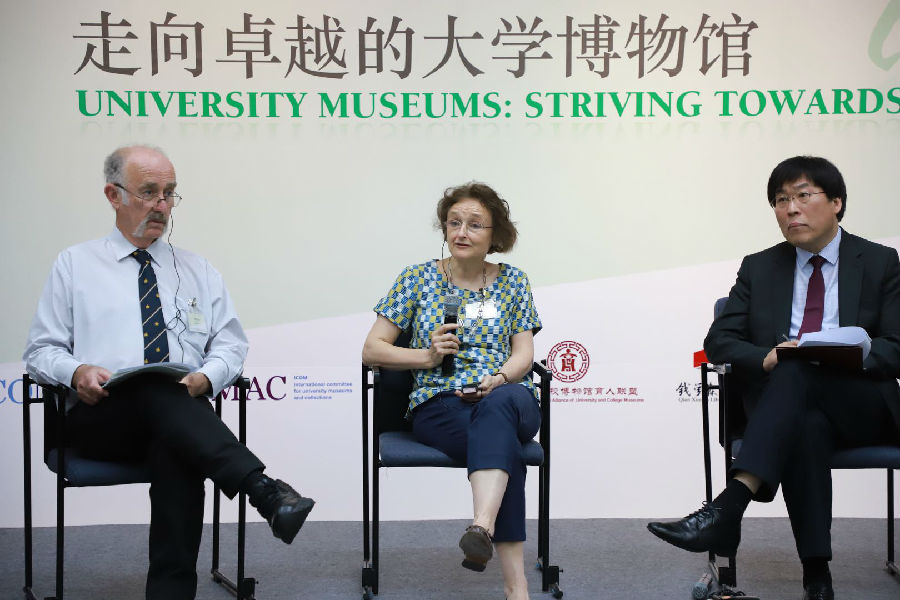Panel Discussion-University Museums: Striving Towards Excellence
04/12/2018

The flagship program that kicked off this year’s University Museums Training Week Shanghai is the panel discussion debating ways and methods of university museums striving towards excellence. Five panelists from different museums and the moderator Zhang Kai, executive director of QLM, formed a heated discussion.
How should university museums define themselves? What kind of channels and possibilities university museums can explore to interact more with the public? In face of the increasing needs of museum resources from the public, how university museums should prepare themselves? These questions are at the core of addressing how university museums should do to best serve the public, to contribute to the social development, and to engage international dialogues.
ICOM vice president Prof. An Laishun said “a university without a museum is like a person with anemia”. Prestigious universities around the world have at least one museum, which is an alarming contrast with China’s university museum number. China has an estimated 300 university museums, which means only ten percent of all universities in the nation own a museum. In this sense, there is great potential in the development of university museums in China.
Vice president of Shanghai University, board member of Chinese Museum Association, Dr. Duan Yong observed that university museums in China on one hand, are at the golden age, especially after decades of rapid economic development, museums are also absorbing great attention from the whole society. But even with the big rosy social backdrop, university museums are not benefiting much compared with public museums. This discrepancy of development progress is manifest not merely on museum numbers, but also on the service quality and social impact they can bring. Focusing on teaching & research and serving the faculty & students are at the core of a university museum’s function, it’s also crucial for university museums to adapt to the public needs and addressing the balance between serving the university and serving the public.
UMAC board member Andrew Simpson suggested that one possibility for university museums is to telling the story of the university per se. University museums are like the children of a university, their functions therefore, are interlocked with the history of the university.
Kate Arnold-Forster, director of university museums and special collections as well as Museum of English Rural Life at University of Reading, shared UK university museum development and stressed that one important factor for the robust development of university museums in the past two decades can be that universities started to realize and recognize the value of university museums. That will catalyze university museums to become more accessible to the public. “We hope university museums are not about bragging or only about showcasing collections; instead, we want the public to know about our university better through university museums.”
Chen Zenglu, head of education department of Shanghai Museum provided his observations from the perspective of a public museum. The distinction between a university museum and a public museum, as he said, will minimize gradually with the growing expertise and accessibility of university museums. “We see an explosive need by the public of museum services and resources in the past few years, therefore it’s museums that should adapt to the social change with an open vision and growing expertise. That’s a challenge shared by both public museums and university museums.”
